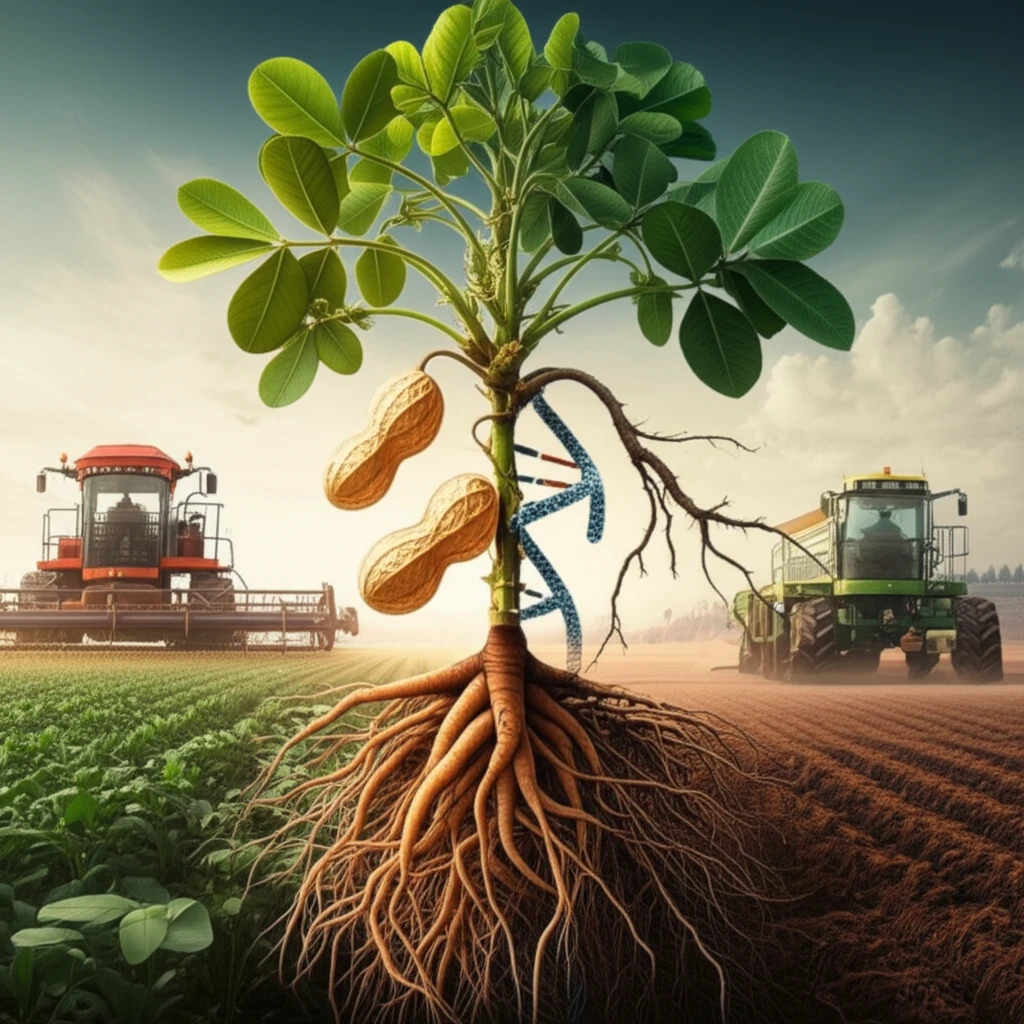
Peanut Power: How Domestication Shapes Disease Resistance and Oil Quality
"Unlocking the genetic secrets of groundnuts to boost yields, improve oil quality, and fight off diseases – a promising future for this versatile crop."
The journey of crop domestication is a tale of trade-offs. As humans cultivated wild plants, selecting for desirable traits like larger seeds or better taste, some less obvious advantages, such as natural disease resistance, were often left behind. This is particularly true for groundnuts (Arachis hypogaea L.), also known as peanuts, where the genetic gap between cultivated varieties and their wild relatives presents a challenge for breeders.
Wild Arachis species hold a wealth of untapped genetic potential, particularly for traits like resistance to devastating diseases. However, these wild relatives are often incompatible with cultivated peanut varieties due to ploidy differences—the number of sets of chromosomes in their cells. This incompatibility makes it difficult to directly transfer beneficial genes from wild species to cultivated crops through traditional breeding methods.
But, recent research is cracking this genetic barrier! By creating special 'bridge' plants called synthetic tetraploids, scientists are finding ways to tap into the valuable traits hidden within wild peanut relatives. These efforts are paving the way for groundnuts that are not only more resilient and disease-resistant but also boast improved oil quality and higher yields.
Bridging the Genetic Gap: Synthetic Tetraploids to the Rescue

To overcome the challenge of genetic incompatibility, researchers have turned to synthetic tetraploids. These are essentially 'man-made' plants with a doubled set of chromosomes, created by crossing different wild Arachis species. In this study, two synthetic tetraploids – ISATGR 1212 and ISATGR 265-5A – served as crucial intermediaries.
- ISATGR 1212: Created by crossing A. duranensis ICG 8123 with A. ipaensis ICG 8206. This bridge brought together the A and B genomes.
- ISATGR 265-5A: Made from A. kempff-mercadoi ICG 8164 and A. hoehnei ICG 8190, both containing the A genome.
- AB Populations: ISATGR 1212 was crossed with ICGV 91114 to create AB-pop1, while ISATGR 265-5A was crossed with ICGV 87846 to generate AB-pop2.
The Future of Peanuts: A More Resilient and Nutritious Crop
This research is more than just an academic exercise. By identifying the specific wild genomic segments that contribute to desirable traits, scientists are providing breeders with the tools they need to create improved peanut varieties. These improved varieties promise higher yields, better oil quality, and stronger resistance to devastating diseases, ultimately benefiting farmers and consumers alike.
